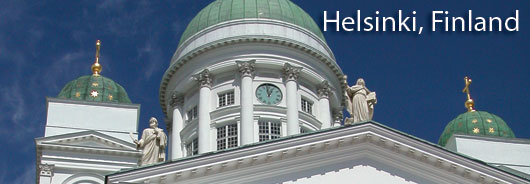
The Helsinki that greets today's visitor is one of the most vibrant and prosperous cities in the world, with one of the highest standards of living and the world's highest literacy rate.
Locals still refer to Helsinki as "a big village," but it is hardly the country town it was only decades ago. With all its bays, inlets, and offshore islands, Helsinki is almost surrounded by water -- or at least you may think so. Water does envelop Helsinki on three sides, and it grew up around a natural harbor overlooking the Gulf of Finland.
The half million people you see walking about are the best educated, the best clothed, the best fed, and the best housed on earth.
Helsinki may stand at the doorway to Russia, but its cultural links are firmly in Scandinavia. It was originally founded in 1550, halfway between Stockholm and St. Petersburg, on orders of the Swedish king Gustavus Vasa, who established it as a buffer zone between Sweden and what was at the time called "the Russian menace."
A city of wide streets, squares, and parks, adorned with sculpture, Helsinki was one of the world's first planned municipalities and is noted for its 19th-century neoclassical architecture. Because the city is relatively compact, most of it can be explored on foot.
From the capital of an autonomous Grand Duchy of Russia, Helsinki was transformed in 1917 (the year of the Russian Revolution) into the capital of the newly independent Finland. Today it's not only a center of government but the nation's intellectual capital, with a major university and many cultural and scientific institutions. Although Helsinki is also a business and industrial center (most major Finnish firms have their headquarters here), and the hub of Finland's transportation networks, the city is relatively free of pollution.